Afsana Ahsan Jeny
Residual Learning and Filtering Networks for End-to-End Lossless Video Compression
Mar 11, 2025Abstract:Existing learning-based video compression methods still face challenges related to inaccurate motion estimates and inadequate motion compensation structures. These issues result in compression errors and a suboptimal rate-distortion trade-off. To address these challenges, this work presents an end-to-end video compression method that incorporates several key operations. Specifically, we propose an autoencoder-type network with a residual skip connection to efficiently compress motion information. Additionally, we design motion vector and residual frame filtering networks to mitigate compression errors in the video compression system. To improve the effectiveness of the motion compensation network, we utilize powerful nonlinear transforms, such as the Parametric Rectified Linear Unit (PReLU), to delve deeper into the motion compensation architecture. Furthermore, a buffer is introduced to fine-tune the previous reference frames, thereby enhancing the reconstructed frame quality. These modules are combined with a carefully designed loss function that assesses the trade-off and enhances the overall video quality of the decoded output. Experimental results showcase the competitive performance of our method on various datasets, including HEVC (sequences B, C, and D), UVG, VTL, and MCL-JCV. The proposed approach tackles the challenges of accurate motion estimation and motion compensation in video compression, and the results highlight its competitive performance compared to existing methods.
In-Depth Analysis of Automated Acne Disease Recognition and Classification
Mar 04, 2025Abstract:Facial acne is a common disease, especially among adolescents, negatively affecting both physically and psychologically. Classifying acne is vital to providing the appropriate treatment. Traditional visual inspection or expert scanning is time-consuming and difficult to differentiate acne types. This paper introduces an automated expert system for acne recognition and classification. The proposed method employs a machine learning-based technique to classify and evaluate six types of acne diseases to facilitate the diagnosis of dermatologists. The pre-processing phase includes contrast improvement, smoothing filter, and RGB to L*a*b color conversion to eliminate noise and improve the classification accuracy. Then, a clustering-based segmentation method, k-means clustering, is applied for segmenting the disease-affected regions that pass through the feature extraction step. Characteristics of these disease-affected regions are extracted based on a combination of gray-level co-occurrence matrix (GLCM) and Statistical features. Finally, five different machine learning classifiers are employed to classify acne diseases. Experimental results show that the Random Forest (RF) achieves the highest accuracy of 98.50%, which is promising compared to the state-of-the-art methods.
An Efficient End-to-End Deep Neural Network for Interstitial Lung Disease Recognition and Classification
Apr 21, 2022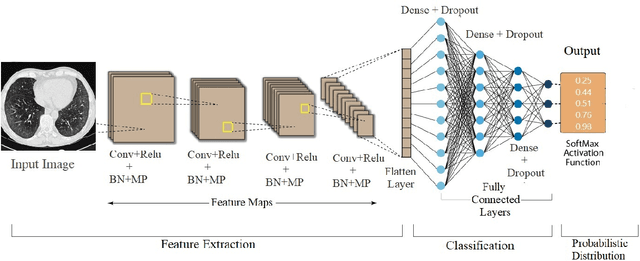
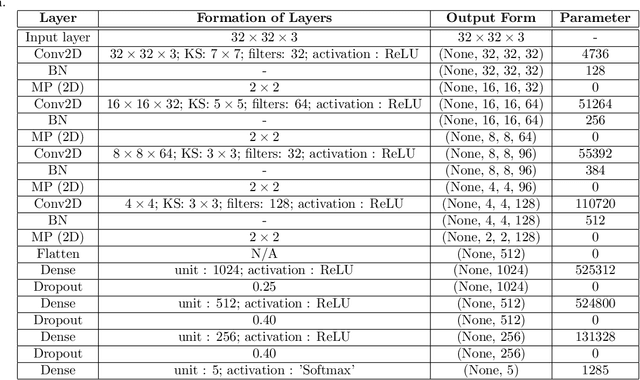
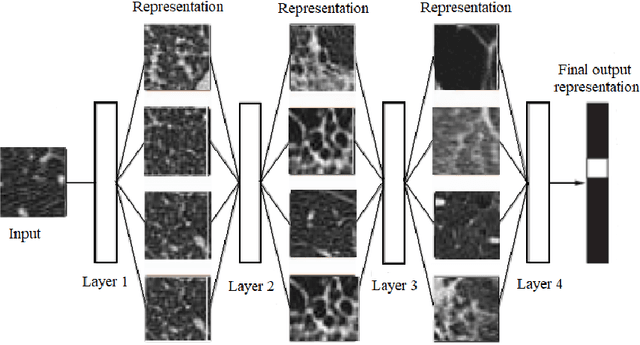

Abstract:The automated Interstitial Lung Diseases (ILDs) classification technique is essential for assisting clinicians during the diagnosis process. Detecting and classifying ILDs patterns is a challenging problem. This paper introduces an end-to-end deep convolution neural network (CNN) for classifying ILDs patterns. The proposed model comprises four convolutional layers with different kernel sizes and Rectified Linear Unit (ReLU) activation function, followed by batch normalization and max-pooling with a size equal to the final feature map size well as four dense layers. We used the ADAM optimizer to minimize categorical cross-entropy. A dataset consisting of 21328 image patches of 128 CT scans with five classes is taken to train and assess the proposed model. A comparison study showed that the presented model outperformed pre-trained CNNs and five-fold cross-validation on the same dataset. For ILDs pattern classification, the proposed approach achieved the accuracy scores of 99.09% and the average F score of 97.9%, outperforming three pre-trained CNNs. These outcomes show that the proposed model is relatively state-of-the-art in precision, recall, f score, and accuracy.
Incept-N: A Convolutional Neural Network based Classification Approach for Predicting Nationality from Facial Features
May 18, 2018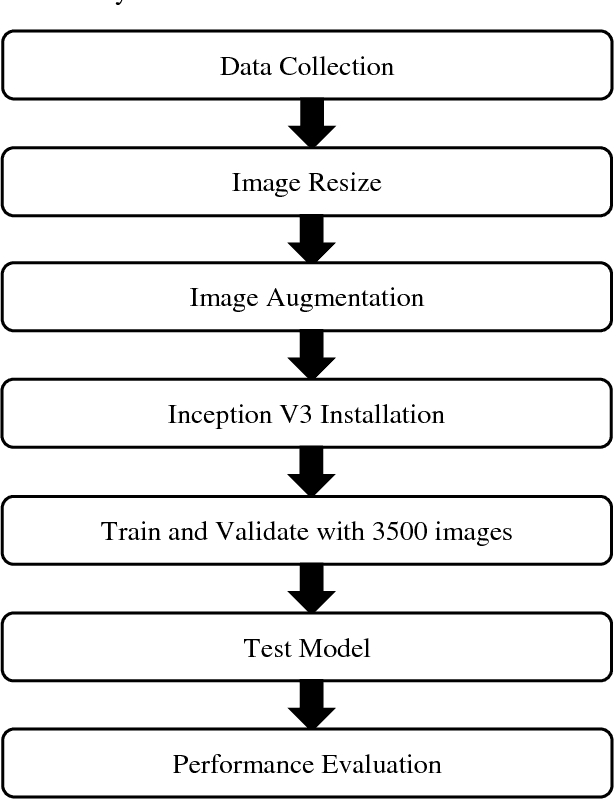
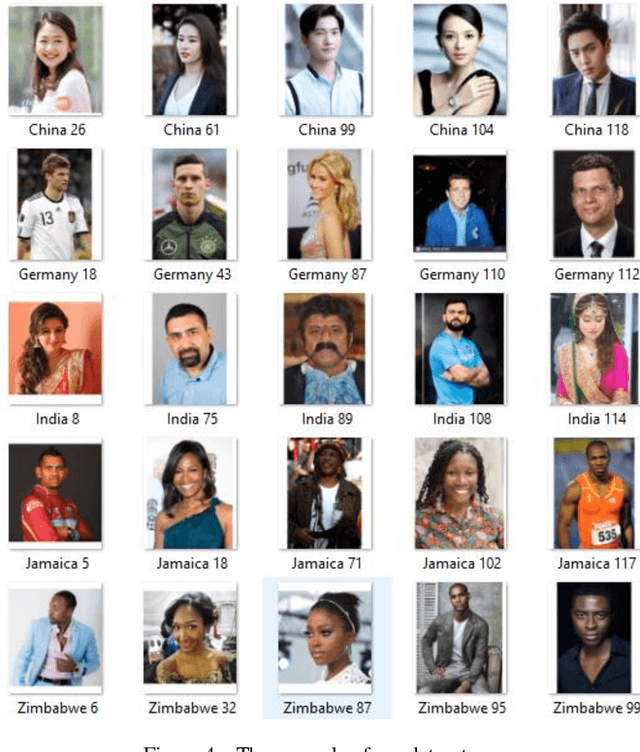
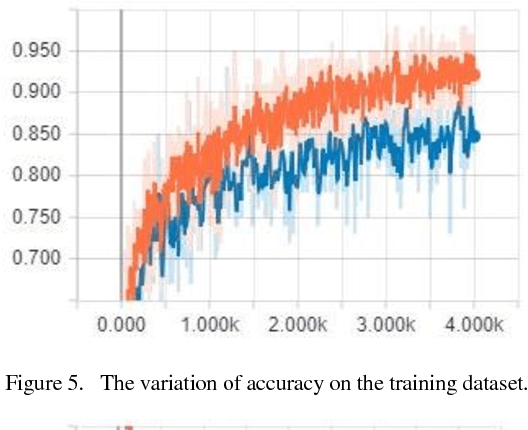
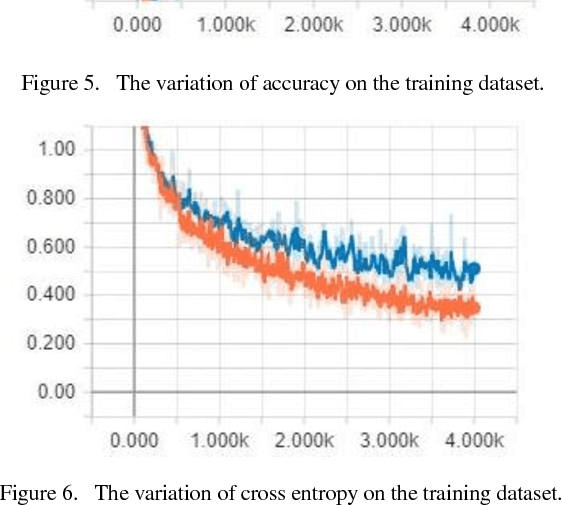
Abstract:The nationality of a human being is a well-known identifying characteristic used for every major authentication purpose in every country. Albeit advances in the application of Artificial Intelligence and Computer Vision in different aspects, its contribution to this specific security procedure is yet to be cultivated. With a goal to successfully applying computer vision techniques to predict the nationality of a person based on his facial features, we have proposed this novel method and have achieved an average of 93.6% accuracy with very low misclassification rate.
 Add to Chrome
Add to Chrome Add to Firefox
Add to Firefox Add to Edge
Add to Edge